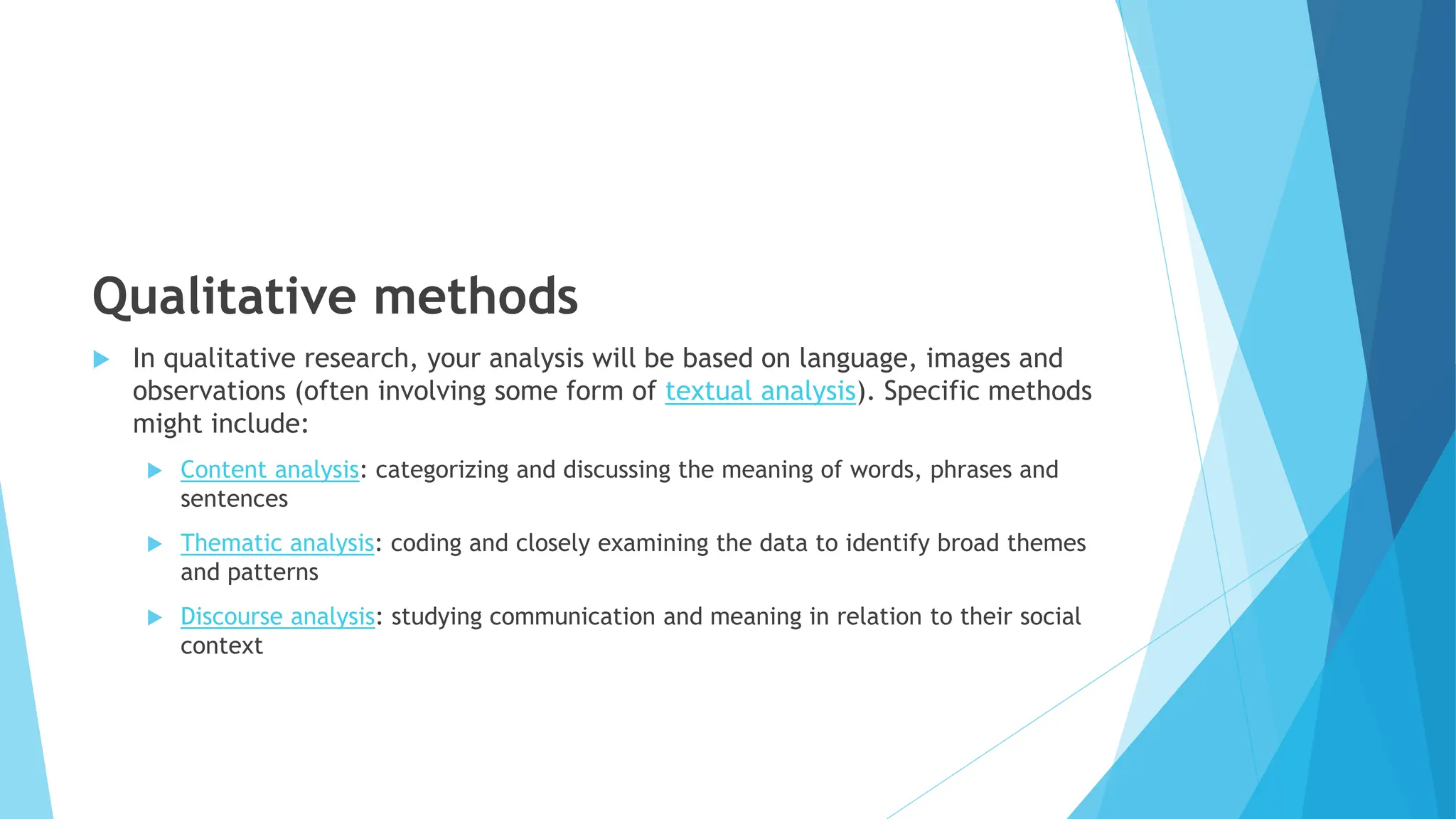The document discusses the key components of a methodology chapter in a research paper. It should include: the type of research conducted, how data was collected, how it was analyzed, any tools used, and the rationale for the chosen methods. The methodology section explains what was done and how, allowing readers to evaluate the reliability and validity of the research. It provides details on quantitative methods like surveys and experiments, as well as qualitative methods like interviews and observations. The analysis methods for both quantitative and qualitative data are also described.














